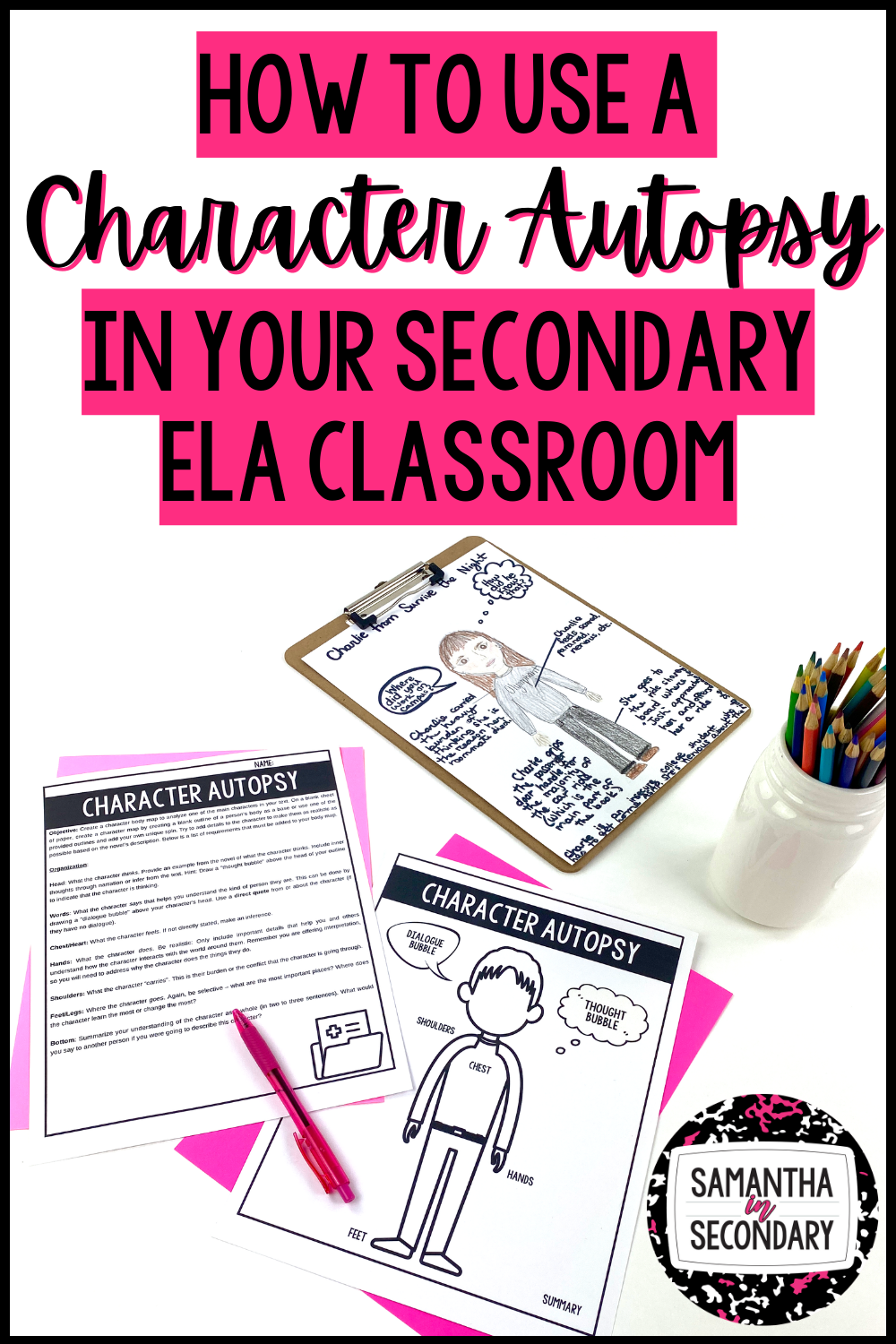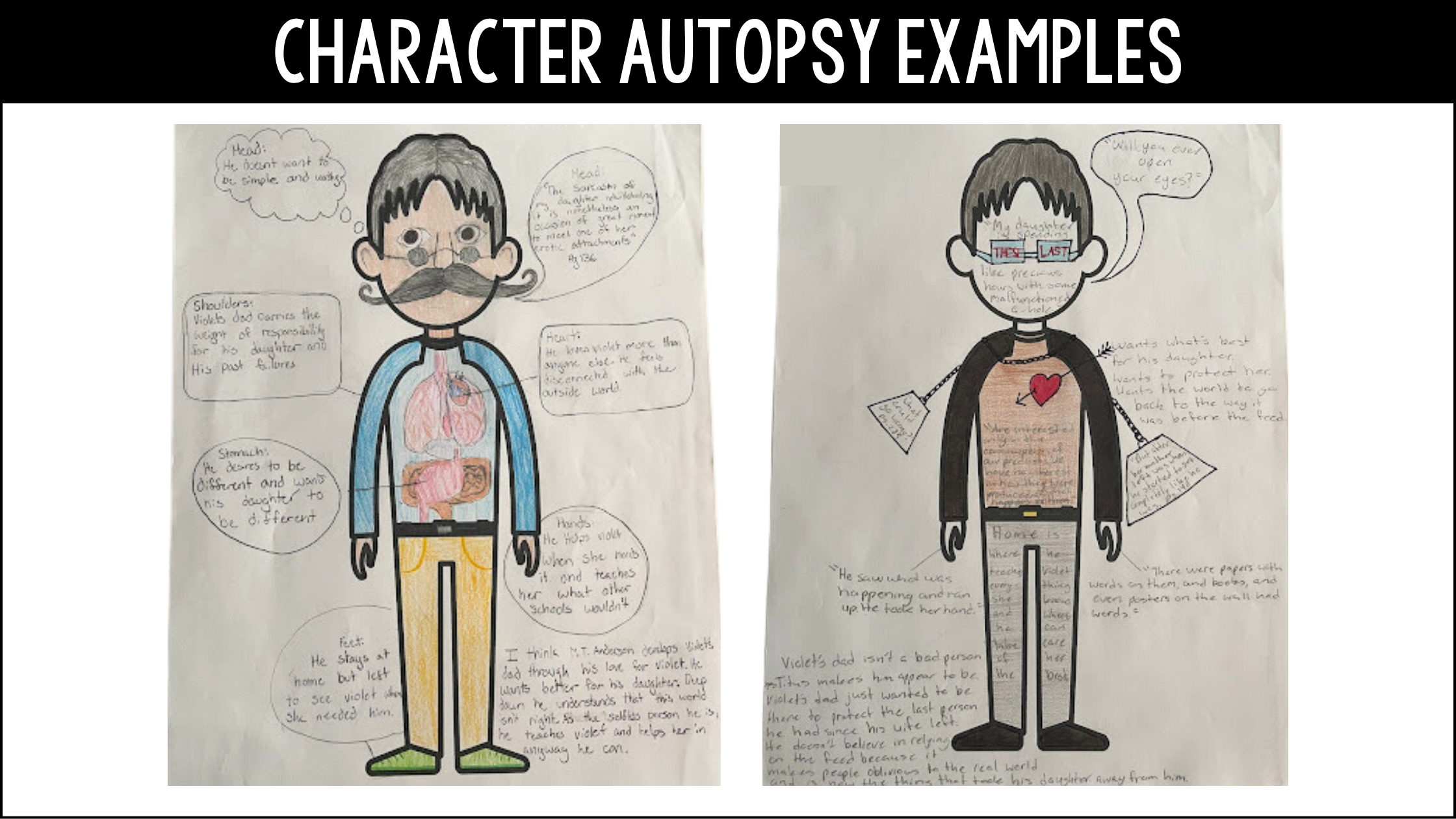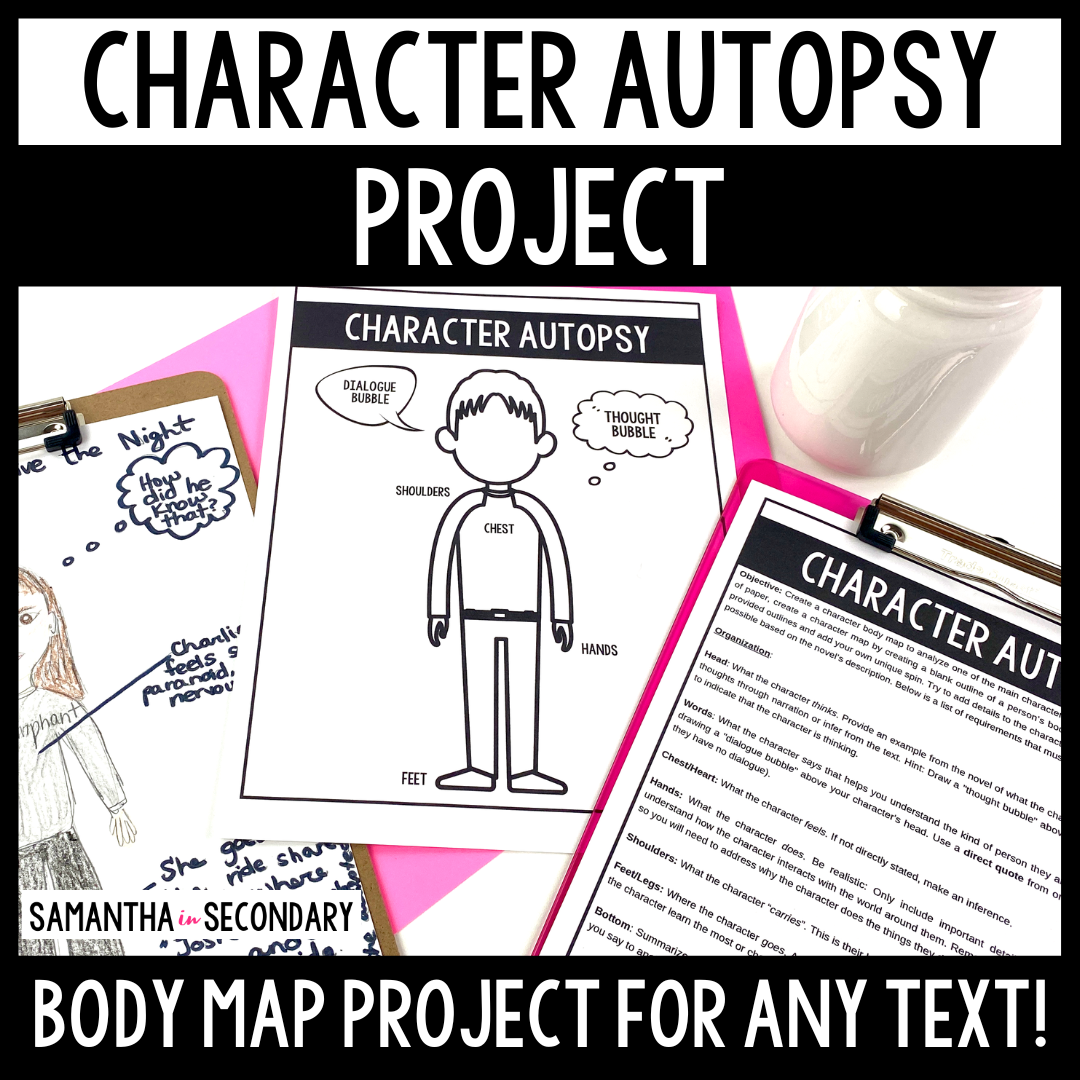Using a character autopsy can be an engaging activity that explores the moments, motives, and traits of characters in literature. This meaningful exercise challenges students to analyze and investigate the inner workings of characters so they can better understand their place in a story. This is also an easy way to incorporate the Reading: Literature standard number three (RL3) into your lessons.
In this blog post, I’ll cover everything from how to set up a character autopsy activity in your secondary ELA classroom to examples and suggestions. Read on and get ready to take your teaching methods beyond the textbook!

What’s a Character Autopsy?
As a secondary English Language Arts teacher, you may not have heard of a character autopsy activity before, but trust me, it’s going to be your new favorite staple for any text. It’s a strategy that allows your students to delve deep into the psyche of a character and truly understand their motivations throughout a text. Essentially, students conduct a “post-mortem” analysis of a character’s actions and words, dissecting their behavior and personality traits to gain a better understanding of who they are and why they act the way they do. This activity provides a great opportunity for your students to practice critical analysis and develop their own interpretations of a text, as well as collaborate with their peers to uncover the hidden nuance within characters.
Why Use a Character Autopsy?
A character autopsy involves breaking down a character’s personality traits, motives, and emotions in a post-reading analysis. By doing this, students gain a greater understanding of a character’s role in the story, and can relate to the character more deeply. Furthermore, this critical thinking exercise helps students develop their analytical skills which are crucial for success in both academic and real-world settings.
This activity is also directly aligned to the Common Core State Standards by allowing students to analyze a complex character over the course of a text. (RL3)
How to Use a Character Autopsy
A character autopsy allows students to analyze different parts of a character using a body map. There are many ways you can do this, but here are some practical strategies.
First, decide how your students are going to create their body maps. I always liked to provide templates for my less artistically inclined students. (I am also not so artistically inclined, so I always appreciated that when completing a project!) You can also get creative and potentially have students do this project outside with sidewalk chalk or use large butcher paper to complete it in groups. The possibilities are endless.
Next, decide exactly which character traits students will be analyzing. I always liked to break it down by body part. Here are a few examples:
- Head: What is the character thinking?
- Shoulders: What weight is the character carrying?
- Heart: What is the character feeling?
- Hands: What is the character doing?
- Feet: Where is the character going?
You can choose which tasks make sense for your specific assignment, but make sure you require text evidence to support the students’ analysis. That’s where the real magic is. I also like to make sure that students provide a summary of the character as well.

Done-For-You Character Autopsy Resource
If you’d like to use my specific project complete with templates, instructions, rubric, and examples, click here to see my resource.

Ultimately, utilizing a character autopsy project within English Language Arts classes serves many purposes: fostering critical thinking skills, encouraging collaboration between classmates, and helping to develop students’ writing and research abilities. Doing so could lead to increased student engagement as well as improved academic performance.
This exercise might be particularly applicable for students who need further clarity on how characters change throughout the course of different works of fiction.
Looking for more tips on teaching character in your secondary ELA classroom? Click here for more strategies from my blog.
Incorporating a character autopsy in your ELA lessons is a no-brainer, so what are you waiting for? Give it a try today!
Happy teaching!












